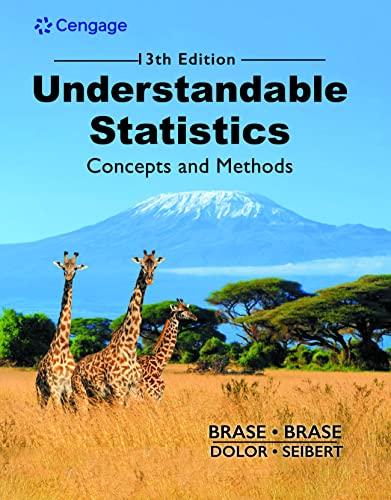MyersBriggs: Marriage Counseling Most married couples have two or three personality preferences in common (see reference in
Question:
Myers–Briggs: Marriage Counseling Most married couples have two or three personality preferences in common (see reference in Problem 20). Myers used a random sample of 375 married couples and found that 132 had three preferences in common. Another random sample of 571 couples showed that 217 had two personality preferences in common. Let p1 be the population proportion of all married couples who have three personality preferences in common. Let p2 be the population proportion of all married couples who have two personality preferences in common.
(a) Check Requirements Can a normal distribution be used to approximate the pˆ pˆ 1 2 2 distribution?
Explain.
(b) Find a 90% confidence interval for p1 2p2.
(c) Interpretation Examine the confidence interval in part
(a) and explain what it means in the context of this problem. Does the confidence interval contain all positive, all negative, or both positive and negative numbers? What does this tell you about the proportion of married couples with three personality preferences in common compared with the proportion of couples with two preferences in common (at the 90% confidence level)?
AppendixLO1
Step by Step Answer:

Understandable Statistics Concepts And Methods
ISBN: 9780357719176
13th Edition
Authors: Charles Henry Brase, Corrinne Pellillo Brase





